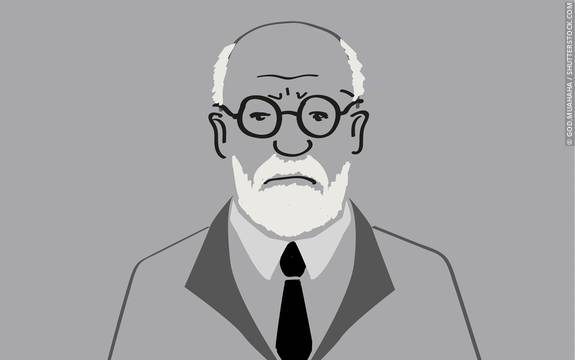The Dora case is one of the best known and most interesting of psychoanalysis, it can be said that this is one of the founding processes of this discipline, was followed by Sigmund Freud himself and confirmed some approaches to the conceptualization of hysteria, one of the psychic structures contemplated in Freud’s analysis.
From Dora’s case, Freud reaffirmed in one of his basic premises: the symptoms of hysteria are the result of repressed sexual fantasies. Going into the case analysis, let’s first look at “Dora?It’s a fictitious name. It matches Ida. ” Bauer, who underwent a three-month psychoanalytic follow-up with Freud and voluntarily interrupted the process.
- The Dora case has been marked in history as one of the most emblematic of psychoanalysis.
- Data on this clinical case were published in 1905.
- Under the heading Fragmentary analysis of a case of hysteria.
- Dora case.
- Read below.
“Here is the great mystery that I have not been able to solve, despite my thirty years of research on the female soul: what does a woman want??- Sigmund Freud-
Dora, or Ida Bauer, arrived at Sigmund Freud’s office headed by her father, a former patient of the Viennese psychoanalyst, the first time she told me about the physical symptoms that haunted her, in particular, she suffered from very uncomfortable cough attacks. He was 16 at the time, and just after the first consultation the cough disappeared, so he did not go back to his sessions.
According to Freud’s account of the Dora case, the patient had different symptoms from childhood, at the age of 8 he had dyspnoea. At the age of 12, she had chronic headaches and had her first cough.
The coughing fits returned and he looked for Freud again. I am 18 years old. Currently, he is believed to have suffered from depression and emotional instability. She avoided socializing, indicating that he was tiring her. He was in conflict with his mother and became estranged from his father. His parents found a letter announcing the suicide. He also passed out for no apparent reason.
The story of Dora’s family was complicated, was your father a lover of a woman identified as?K:i?. This fact was initially hidden from Freud. La Dora’s mother was an almost invisible presence, whose role was essentially that of housewife. Dora knew her father’s infidelity and showed Freud her outrage.
Once Freud knew this fact, he focused his hypothesis on him. Freud interpreted Dora’s true focus as “Mrs. K. “At the same time, did you also interpret that the patient was “in love”?Mr. K. ? In Dora’s story with Mr. K. , we found two episodes crucial to Freud.
Dora told Freud that at the age of 14, on one occasion when they were both alone, MK hugged her and kissed her in the mouth. Dora described that she felt disgust and disgust. So Freud concluded that at fourteen, Dora was hysterical?”First of all those who, on an occasion conducive to sexual arousal, develop a feeling of disgust principally or exclusively, I will not hesitate to diagnose hysteria, wrempto or not have somatic symptoms.
For Dora’s father, there was a second episode at MK’s summer residence that would have caused the depression. During a walk on the lake, M. K. Reportedly made an affectionate proposal to Dora. The episode was narrated by her mother, who asked her husband to break off the relationship with K.
What Freud discovered is that the hysterical unconsciously identifies with the man, does not know what it is to be a woman, another woman, who is the object of his father’s desire, and who in this case is not the mother, represents the woman. possibility of answering the central question of hysteria: “What does it mean to be a woman?
Freud suspects the hysterical of not understanding what is the factor that defines her as a woman, she seeks an answer to that through another woman, so she is always involved in love triangles, of course, all this happens in the unconscious.
The Dora case has opened up several debates about hysteria in psychoanalysis, freud’s main vehicle for elucidating the unconscious drama her patient experienced was sleep, they would have revealed that behind Dora’s symptoms was psychosexual conflict.
As already noted, behind hysterical symptoms there would be a repressed sexual desire, in fact, it is indicated that all these diseases or somatic symptoms are a sexual practice of hysteria, in addition, Freud found that, as the symptoms were understood This, in turn, would be for Freud one of the fundamentals of psychoanalysis and proof of the accuracy of his method.
Dora’s case was a “failure” for Freud, because she did not complete her psychoanalytic therapy. This, at the same time, has contributed to a better understanding of the phenomenon of “transfer” in its negative aspect. The patient places a series of feelings and expectations in his analyst. When positive, psychoanalysis therefore succeeds; otherwise, the process will become contaminated.

